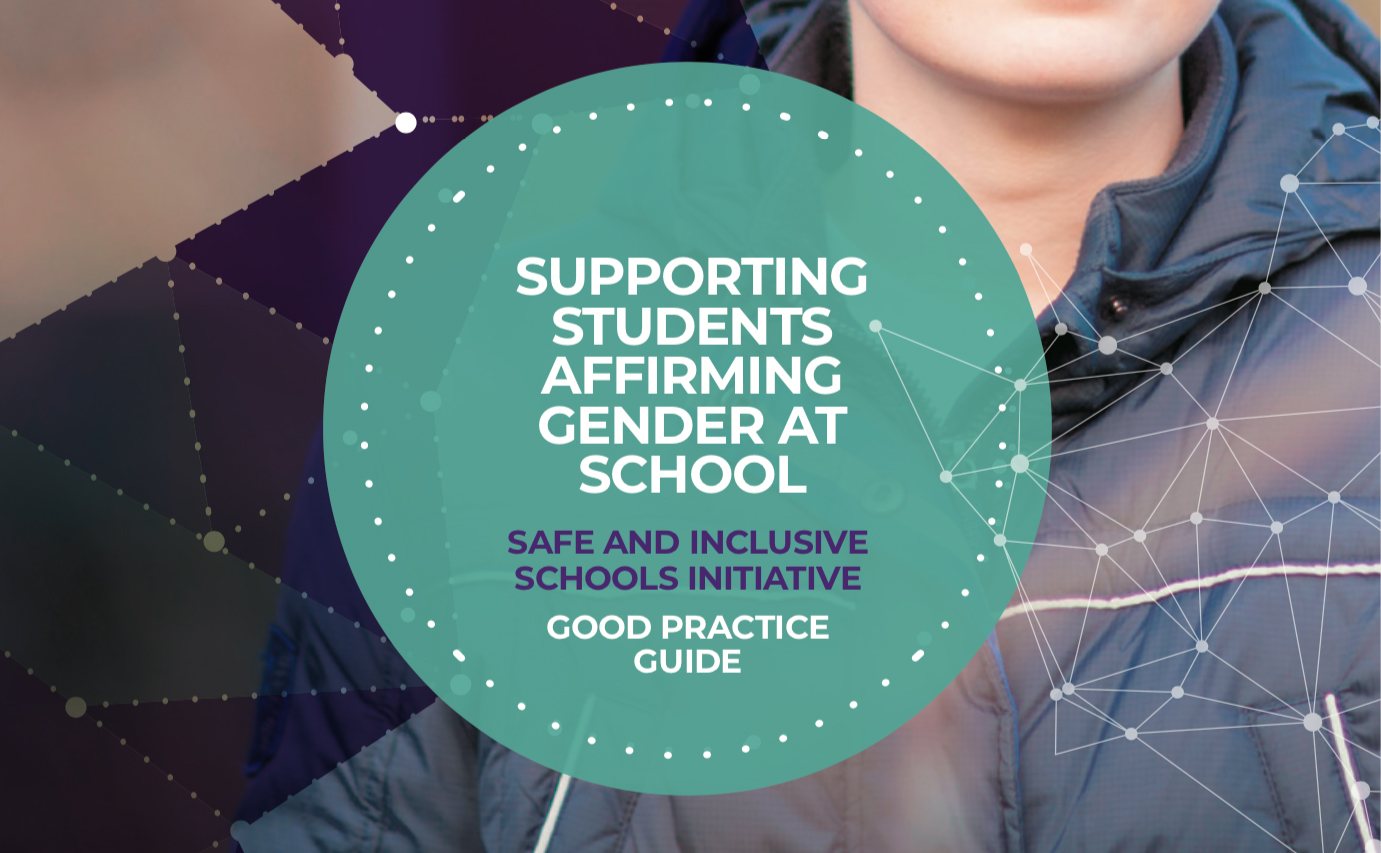
Good Practice Guide
SUPPORTING STUDENTS AFFIRMING GENDER AT SCHOOL
This Guide deals specifically with the ways school communities can be proactive in gender-inclusive practice, and support students who are transgender and gender diverse (TGD) when they decide they wish to share or express their gender identity at school.
DOWNLOAD THE GUIDE
The Good Practice Guide been written with school leaders specifically in mind. School leaders carry significant responsibilities for learning, school climate and culture, student and staff wellbeing and safety, compliance with laws, regulations and policies, and communication with others within and outside the school community.
This Guide is not a procedural manual. There are many existing information resources that discuss the more practical aspects of supporting an individual student when they are affirming gender at school. Some of these are included as additional resources later in the Guide.
Depending on the school system (public, Catholic, or independent), schools may need to implement system-wide policies in a standard or consistent way, in their administrative processes, student welfare supports, and implementation of teaching/learning programs. Schools may choose to shape these according to the specific needs and profile of their school community. All schools must comply with legislation and regulation, including anti-discrimination laws, in the way they manage these processes.
This Guide sets out Guiding Principles and important other considerations for school staff for gender inclusive practice in general, and approaches that can be used specifically when supporting students who are affirming a transgender, gender diverse or non-binary identity (see section on Affirming Gender), or a different expression of gender at school.
Many of the specific individual needs of transgender and gender diverse students are accommodated when school communities have broad gender-inclusive practices.
Accounting for diversity in gender in the way we structure all of the school experience - from enrolment/administrative processes, through learning design and curriculum, participation in school-related activities, events and programs, access to facilities and resources, and the way community diversity is recognised and celebrated – can improve this experience for all students. The starting point for good practice is a gender-inclusive standard.
It may not always be possible to attain this goal, due to systemic and individual factors. In that case, we use the Guiding Principles (p16-p17) and Key Questions (p19) to help us find the next best set of solutions for individual student needs and the whole school community.
This guide includes a list of common areas where changes, adjustments, accommodations, or adaptations may be required when a student affirms gender at school. There are a range of other resources available to assist in the implementation of these steps, and information about some of the more recent and comprehensive of these is included towards the end of this guide.
DOWNLOAD THE GUIDE
This guide was produced as part of the ACT Safe and Inclusive Schools Initiative, and developed collaboratively with staff from Sexual Health and Family Planning ACT and A Gender Agenda. The Initiative is grateful for the review and input of educators and others from ACT Education Directorate. The ACT Safe and Inclusive Schools Initiative provides assistance to schools to develop and maintain safe and inclusive environments for all students regardless of their gender presentation/identity, intersex status or sexual orientation. The Initiative is funded by the ACT Government Education Directorate.